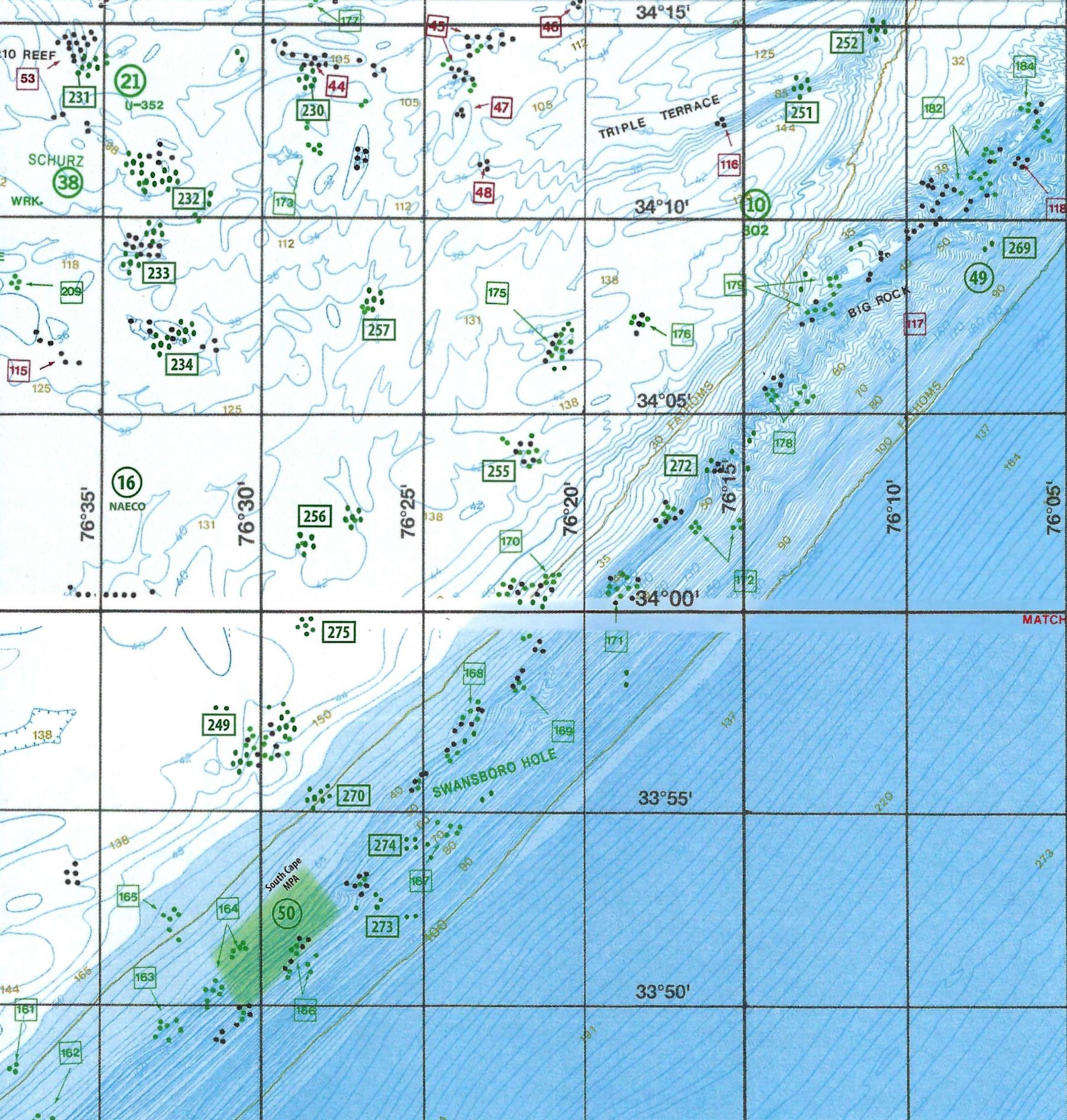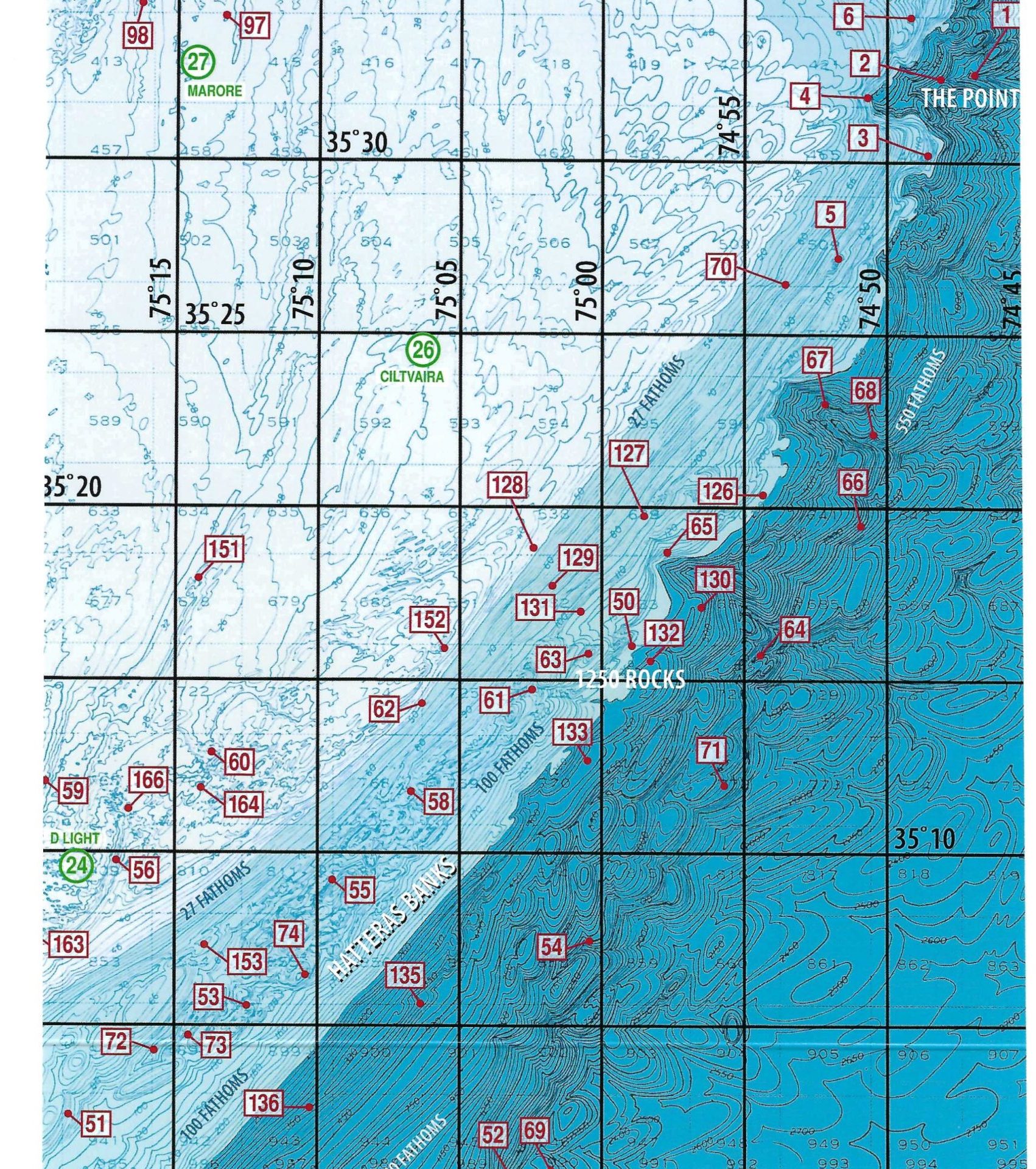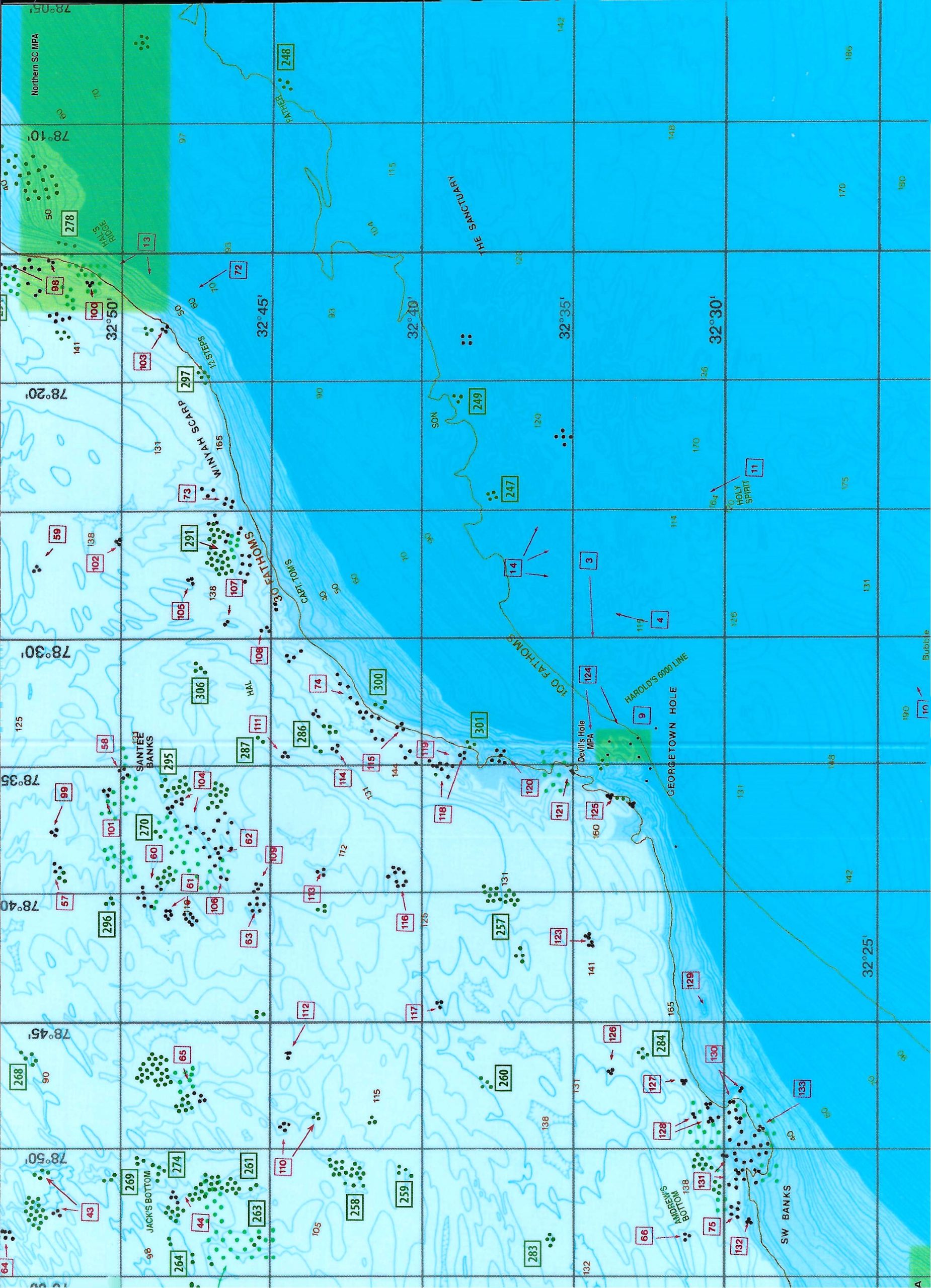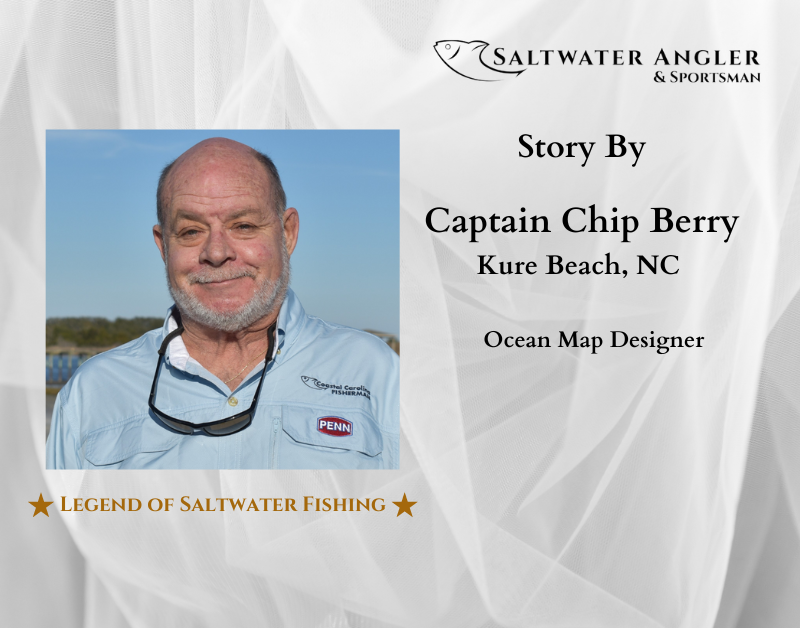Fishing The Mystical Offshore “Shelf Break”
I’ve always said, if the purple Gulfstream waters on it, I gonna’ fish it!” As an avid blue water fisherman for 50 years, nothing provides, in my opinion, more thrill than working the 30-fathom terrace. The “shelf break” where the water rolls from 30 to 100 fathoms (165-660 ft.) A magical habitat of live bottom slopes, outcrops, and ledges where the conditions often align where the western wall of the Gulf Stream current meets the prime bottom structure. I would argue there is no place more productive or more thrilling than hunting this unique habitat.
The shelf break is a part of the old geologic oceanfront created from the ice age from 100,00 to 20,000 years ago when sea levels were 300 ft. lower than today. As the ocean rose through the millennia, the shelf break offered a place where the prime “Live-Bottom” habitat was created and exists to this day as a remnant and beautiful terrace. This region offers the most significant shallow-water limestone habitat along the entire South Atlantic coast. The “Break” parallels the east coast of the South Atlantic Bight as it meanders from Cape Canaveral northward to Hatteras. This terrace is roughly 70 miles off Savannah, 60 miles off Charleston, and about 40 miles off Cape Lookout. Less than 30 miles offshore, it meanders along the outer banks from Ocracoke northward to Cape Hatteras and Oregon Inlet, where the shelf break merges into the substantial canyon habitat that extends north into the mid-Atlantic.

Big Rock
To provide perspective, inshore of the shelf break in waters of less than 165 ft, the landside flat shelf can be described as a gentle slope where limestone habitat ranges from flat, scattered low-relief live habitat to moderate relief reefs. Ancient nearshore terraces follow and greatly meander along the 55-70 ft. depth and depths of 90 to 100 ft. Best described as a hit-and-miss limestone habitat, these regions provide the best nearshore habitat for both bottom fish species and pelagic fish migrations. Offshore of the break in waters from 660 ft. and deeper is best described as a rolling topography with ridge and runnel bathymetry and deepwater mound habitats in 800 to 2,000 ft of water. These deepwater and cold-water coral reefs are substantial. An area just discovered and recently mapped claims the offshore side of the break from North Florida to the south of Charleston is the world’s largest deepwater reef system ever discovered. The size of Vermont!! This deep-side reef on the Blake Plateau is unique, and hundreds of new marine species are expected to be discovered. Very interestingly, sunlight is largely absent at these depths!

Cape Hatteras Region
The “shelf Break” from 165 ft. to 660 ft. is a highly meandering slope where the top to the bottom can be about ten miles in width from the inshore to the offshore side. Along these depths there are several distinct ledge systems — Namely 165 Ft. to 180 ft, and other ledge terraces occur from 210 to 240, 240 to 360, and 360 to 660. Some areas such as the “Georgetown Hole” and the “Big Rock” comprise a very pronounced drop from 30 to 100 fathoms over a very short distance. These ledge segments provide not only great bottom structure, but when conditions are right, will also push Gulfstream water up the break creating upwellings, water mass boundaries, and sargassum weed lines and patches. A water mass boundary edge will often coincide with a watercolor change and a sea surface temperature change.

Georgetown Hole/Winyaw Scarp
So, what’s the best scenario to hunt the break? The best conditions occur when the western wall of the Gulfstream is on the break and has been stable for a few days. In a general sense, the western wall of the stream usually aligns with the break, but not always. Satellite data is best to pinpoint where these edges are on the break. Of particular interest is when you have Back-Loop eddies moving northward where Gulf water is counter-rotating and pushing strong edge habitat back on the shallow side of the break. Pelagic fish like Marlin, Mahi, and Wahoo will hunt the water boundaries and take periotic deep dives to access live bottom reef habitats. Sometimes pelagic species will seek out a particular depth along the break best suited for hunting a specific habitat at a specific time. A fisherman should think like a bluewater fish and hunt the same habitat they are hunting.
For More Information Contact: Maps Unique

You may be interested

Sight Fishing Like A Pro
Tim Wilson - June 19, 2025Sight fishing can be a rush when done right. It’s taking your inshore fishing to the next level with a dose of adrenaline. It requires great upper-level…

My Fishing Spot’s Better Than Yours…..Increase Your Your Hotspots
Tim Wilson - June 9, 2025Every angler has their favorite go-to spots—the kind of place where they landed great fish just a few months back. It might be a familiar dock or…

Pre-Planning For the Next Day’s Fishing Trip Like a Pro
Tim Wilson - June 9, 2025While many saltwater anglers just roll out of bed and head to the boat ramp, the top-notch fisherman has a different approach. It starts before the day…






